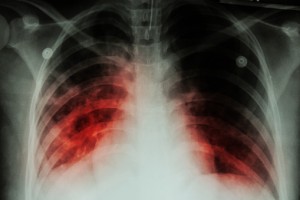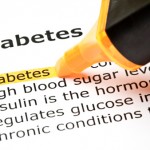Fat Burning How It Works
What happens in the body when we burn fat? Under what conditions is fat burning promoted? These questions will be addressed in this article. For ease of understanding and reference I have written the following info in bullet type format.
- Bodies 2 major stores of fat that provide energy 1) adipose tissue 2) intramuscular triglyceride (IMTG)
- Adipose tissue stores fat in the form of triglyceride. TG is composed of a glycerol backbone with three FFA attached to it.
- IMTG are droplets of fat stored within the muscle fiber.
- IMTG are contained within the muscle and can be used directly, FFA from adipose tissue must be carried through the bloodstream to the muscles to be used for energy.
- Fats are broken down to fatty acids and glycerol. Glycerol enters the glycolytic/glucogenic pathway via glyceraldehyde 3 phosphate
- Primary steps in adipose tissue burning
Triglyceride is mobilized which refers to breakdown to TG to three fatty acids and a glycerol molecule. Glycerol is released sent to the liver and regenerated to glucose. Breakdown of TG occurs due to HSL (hormone sensitive lipase) which is primarily influenced by insulin, and the catecholamines.
Adrenaline and nor adrenaline bind to beta-adrenergic receptors in fat cell stimulating HSL causing FFA release. Triglyceride breakdown is facilitated by three enzymes:
Triacylglycerol lipase,
Diacyclglycerol lipase
Monoacylglycerol lipase
Once broken down FFAs travel through bloodstream to liver or muscle. FFA is taken up into muscle and transported into mitochondria via Carnitine palmityl transferase 1 (CPT-1). FFAs are also broken down in the liver and can make ketone bodes if liver glycogen is depleted.
FFA is burned in mitochondria to produce ATP and acetyl-CoA
- Fat burning yields more energy than carbohydrate or protein oxidation
- One molecule of FFA will yield 129 to 300 ATP depending on length. While the breakdown of one molecule of glucose will yield 36-39 ATP.
- The more hydrogen atoms contained in a fuel nutrient, the more ATP will be produced per molecule oxidized.
-The body works harder to oxidize fats than glucose during exercise.
IMTG is generally considered a faster form of energy during exercise
As adrenaline levels get higher IMTG is stimulated
Trained individuals use more IMTG than untrained.
On a final note, I would personally like to see some more research regarding IMTG use in glycolytic athletes following low carb diet regimens. It would be interesting to see if it is possible that some athletes in glycolytic sports particularly learn to utilize IMTG efficiently when utilizing low carb diets. I say this because I have seen numerous glycoly tic athletes function very well while following low carb regimens. There could be a few reasons this occurs including enhanced usage of IMTG. Keep in mind that these athletes were also consuming high protein diets which contributes to higher glucose conversion than a higher percentage fat diet. In reality, the high protein intake is probably the key factor, but it would be nice to see some further research concerning IMTG utilization.
Copyright 2005 Jamie Hale
References
Fatty Acid Metabolism
http://www.np.edu.sg/~dept-bio/biochemistry/aab/topics/aab_lipid.htm
Gropper, S, S (2000) The Biochemistry of Human Nutrition. Wadsworth.
McDonald, L. ( 1998) The Ketogenic Diet. Lyle McDonald
-
You Dont Have To Live With Those Fat Ankles | Get Rid Of Those Man Cankles Guy
Lets face it we are a conceited bunch. W
-
The Open Secret Of Weight Loss Calories In Calories Out
Extra body weight is being perceived as an epidemic in the United Stat
-
Belly fat in men: Why weight loss matters
If youre carrying a few extra pounds, youre not alone. But thi
-
Exactly How To Shed 12 Lbs Extremely Fast
You will find several major components which cannot be disregarded whe
-
Learn All About Weight Loss With These Tips
There was once a very wise man who stated that good things come
-
Weight On The Mind - Hypnosis Can Lift It
Weight, weight loss, diet books, diet fads – you have been on
- DON'T MISS
- The Fat Truth About Weight Loss!!!
- Lose Stomach Fat, Look Better and Be Better
- How To Lose A Lot Of Weight ?Fast!
- Natural Treatment For Weight Loss And Quick Weight Loss Tips
- Diet Pills And Oprah
- The Best Way To Lose Body Fat And Control Weight
- 5 Reasons To Eat Gluten (Funny)
- Unearth the Weight Loss Values in an Egg
- 7 Fat Loss Strategies For Busy Moms
- 10 Tips To Permanent Weight Loss




